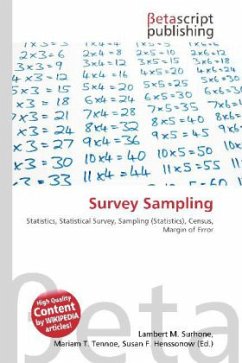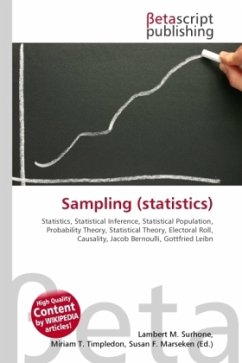
Systematic Sampling
Versandkostenfrei!
Versandfertig in 6-10 Tagen
19,99 €
inkl. MwSt.

PAYBACK Punkte
10 °P sammeln!
Please note that the content of this book primarily consists of articles available from Wikipedia or other free sources online. Systematic sampling is a statistical method involving the selection of elements from an ordered sampling frame. Using this procedure each element in the population has a known and equal probability of selection. This makes systematic sampling functionally similar to simple random sampling. It is however, much more efficient (if variance within systematic sample is more than variance of population). The researcher must ensure that the chosen sampling interval does not ...
Please note that the content of this book primarily consists of articles available from Wikipedia or other free sources online. Systematic sampling is a statistical method involving the selection of elements from an ordered sampling frame. Using this procedure each element in the population has a known and equal probability of selection. This makes systematic sampling functionally similar to simple random sampling. It is however, much more efficient (if variance within systematic sample is more than variance of population). The researcher must ensure that the chosen sampling interval does not hide a pattern. Any pattern would threaten randomness. A random starting point must also be selected. Systematic sampling is to be applied only if the given population is logically homogeneous, because systematic sample units are uniformly distributed over the population. Example: Suppose a supermarket wants to study buying habits of their customers, then using systematic sampling they can choose every 10th or 15th customer entering the supermarket and conduct the study on this sample.












